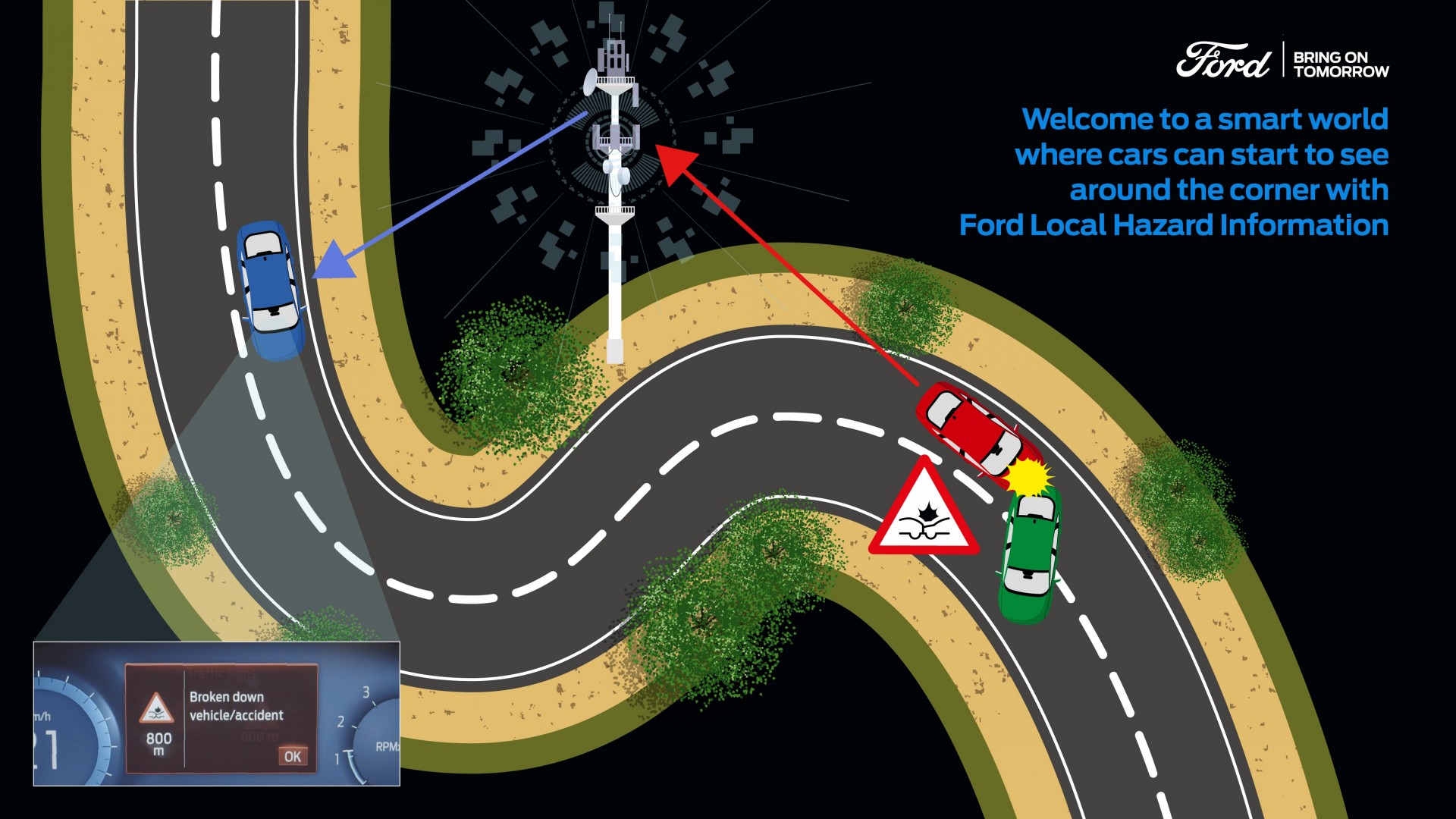Ford introduces Car-to-Car communication – LHI is your Guardian Angel
Published on 16th January 2020 at 10:49
Some years ago, I went to Rockingham in the UK and got an insight into the future communication of vehicle to vehicle. The exercises worked well and albeit the technology was new, there was little doubt in my mind that our future would involve a fair bit of silent, but important chit-chat between vehicle in the very near future.
Fast forward to January 2020 and a new anagram, a new technology joins the myriad of technologies already in situ. From the folk in Ford comes, Local Hazard Information, (LHI), which will provide drivers with knowledge unforeseen heretofore. Yep, they’ll be able to see, metaphorically, around corners.
This technology is a brilliant piece of kit, providing the driver with important information within their current driving area that may affect their progress and may necessitate them taking an action to reduce their speed or stop altogether.
Local Hazard Information (LHI) therefore marks a significant step on the journey towards a connected transport infrastructure by helping drivers prepare for and potentially avoid dangers on the road. It would be very effective in warning about sudden tailbacks, accidents or spilled loads, the driver behind – and possibly out of sight – is given advance warning. This could also apply to everything from freak hailstorms, to sudden flooding, or even landslides.
Whereas previous traffic incident alert systems have relied on drivers to input information in order to generate alerts. LHI works autonomously, without the need for any driver interaction, to generate information and issue warnings. The triggers for the system come from what is happening in the cars ahead. It could be that airbags have been activated, hazard warning lights are flashing, or windscreen wipers are in operation.
Hazards are only displayed – via the dashboard display – if the incident is likely to impact on the driver’s journey. LHI is designed to be more beneficial to drivers than hazard information from current radio broadcasting systems, which often deliver notifications not relevant to them.
LHI is featured as standard and free of charge for the first year on the new Ford Puma. This new technology is being rolled out across more than 80 per cent of Ford’s passenger vehicle line-up by the end of this year. Crucially, the benefit will not be limited only to those travelling in Ford vehicles. Information sent can be used to alert drivers of other manufacturers’ vehicles, and vice-versa.
How LHI works
Sensors monitor activities including emergency braking, fog lights and traction control to detect adverse weather or road conditions. Data from these activities is then computed to determine the hazard location and whether a traffic incident has occurred.
The vehicle automatically provides updates through a secure connection to “the cloud” using the FordPass Connect modem. Ford’s technology partner HERE Technologies operates the central cloud-based platform that collates information from multiple vehicle brands, governed by a business‑to‑business agreement.
The more cars are connected to the network, the greater the efficiency of the system. When many vehicles generate the same warning, others in the vicinity receive incident information from the cloud via the cellular network, enabling drivers to reduce speed or take appropriate action.
Additional information is sourced from public authority incident databases and traffic reports to provide drivers with further advance warnings including approaching vehicles driving on the wrong side of the carriageway, animals or people in the road ahead, and roadworks.

